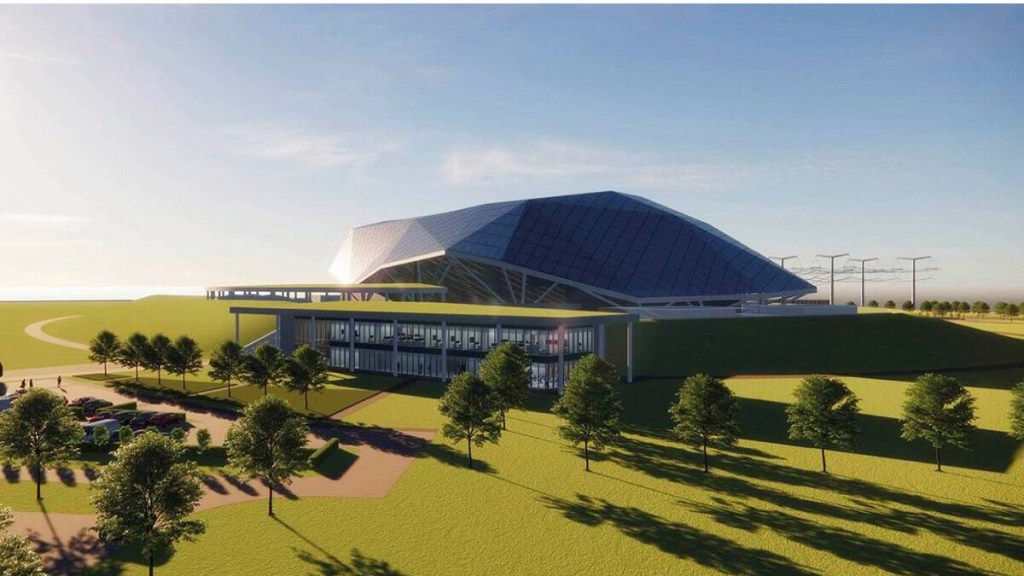Syed Ali
Recent advances in Nuclear fusion technology after COP27 has flared the intermittent rage on Climate Change this year. This is being further compounded by India’s G20 presidency, with the theme ‘one earth, one family, one future’ promoting sustainable lifestyle and conscious living. The recent emissions gap report narrates an alarming situation on the widening gap and the closing window on the rising temperatures. The ongoing rate of carbon emissions will increase temperatures to 2.8C by the end of the century almost twice the expected warming rate as agreed upon in the Paris agreement in 2015. Overshooting the temperature will have irreversible consequences for the planet, visible now with the increase in natural disasters globally.
One of the primary reasons for global warming is increased carbon emissions emitted by the burning of fossil fuels. India is working to phase out its thermal power plants and replace them with nuclear-powered reactors to accelerate its green transition towards sustainable energy. With advancements in recent decades Small Modular Nuclear Reactors (SMRs) will be the go-to technology for this green transition as they are safer, less capital intensive and generate less waste. SMRs are also less exposed to earthquakes and other natural disasters due to their comparatively smaller size and because they can be conveniently turned off, unlike conventional nuclear reactor reactors. Moreover, SMRs are faster to build and install and could be pre-prefabricated making their adoption faster.
With the growing economic upward mobility parallel to increasing industrialisation and higher consumption levels, energy is needed to supply the growing demand for a host of basic products. Coal forms the major share of the energy mix in most Developing countries although gradually shifting towards sustainable & renewable energy sources. The primary and conventional sources of renewable energy; hydro, wind, and solar are being used to harness energy. However, the technology to generate renewable energy comes at a very high cost and often due to the lack of technical know-how is unattainable in many developing or least developed countries this has been exacerbated further post-pandemic with disrupted supply chains. Therefore, climate finance and the contributions assured by developed countries need to be met and accelerated to wean off fossilised sources and progress rapidly towards sustainable sources of energy.
India’s existing energy mix comprises 57.9 percent fossil fuels, 42 percent from non-fossil fuel sources, and 1.7 percent from nuclear energy. Modern modular nuclear reactors can increase the share of nuclear energy; a sustainable, non-emitting, and cost-efficient source of energy generation. New innovations in technology have changed the way soviet-era nuclear reactors work. Outdated wisdom has given an untouchable status to nuclear reactors which could be attributed to the mishaps in Fukushima, Chernobyl, and a recent leak in Germany. However, modernised miniature reactors do not generate harmful radioactive waste and are safe to support growing energy demands.
International politics around nuclear technology after Hiroshima and Nagasaki has been mired in conflict with international agencies and proliferation treaties keeping the nuclear industry heavily regulated and stifled. The legitimate fear that nuclear technology can be used for nefarious purposes needs to be tackled by upskilling the security apparatus to pre-empt threats to deal with a situation.
Realistically, we are racing against time, therefore aggressive steps need to be incorporated without discriminatory measures affecting the development of emerging economies with feeble energy security. Nuclear energy generated 10 percent of the world’s electricity in 2020, a significant decline from the peak of almost 17.45 percent in 1996. Since nuclear power generation started in India in the early 1970s, the percentage has not risen above 4 percent when compared to a share of around 1.8 percent in the early 1990s, nuclear power generation in India reached a peak of 3.7 percent of total generation in 2002. Despite high goals, robust protection, and large financial allocations, the nuclear power sector has the slowest growth rate among fuels in terms of adding capacity. Many other explanations have been put out by observers, ranging from local opposition to the slow pace of capacity expansion to large upfront capital investments, cost increases, and technological issues.
Globally, the adoption of Nuclear electricity generation is being considered a viable option. Recently, South Korea inked a deal with Poland to help build four nuclear reactors as Warsaw aims to phase out coal to lower carbon emissions. Globally, the United States leads in nuclear consumption with 91.5GW of nuclear generation. France being the most aggressive consumer of Nuclear energy in Europe generates 61.3GW of nuclear energy. China with its nuclear islands generates 50.8GW of its total energy mix. In recent times, Startups have also come up in the small modular nuclear reactor space; the most prominent being OKLO in the USA and Danish startup Seaborg. Public-private partnerships can thaw the stigma around Nuclear technology for energy security as it is an efficient and sustainable way to bridge the energy divide across demographics and help countries meet their development challenge. India with its sophisticated Nuclear technology and being a member of the prestigious Nuclear Supplier group needs to vehemently adopt nuclear energy for building a robust energy security infrastructure.
Author is a public policy professional working as a consultant for RIS, New Delhi.
Disclaimer: Views expressed are personal and do not reflect the official position or policy of Financial Express Online. Reproducing this content without permission is prohibited.
